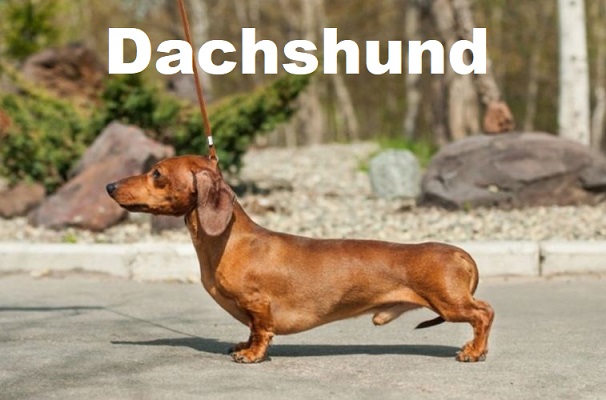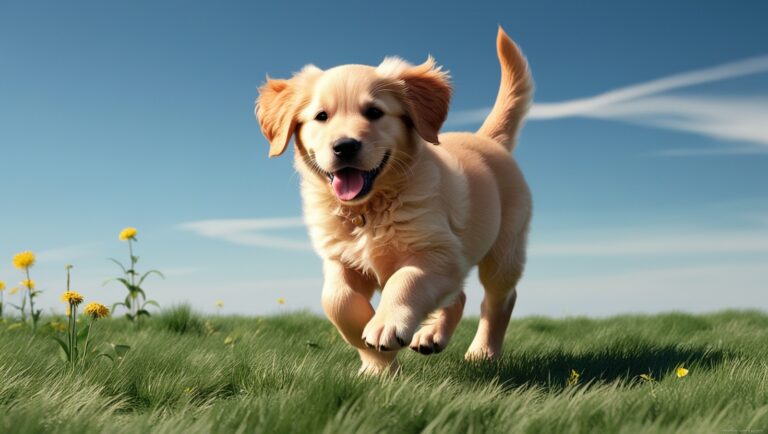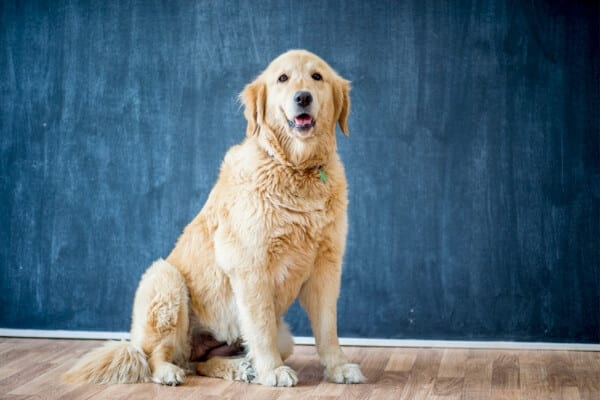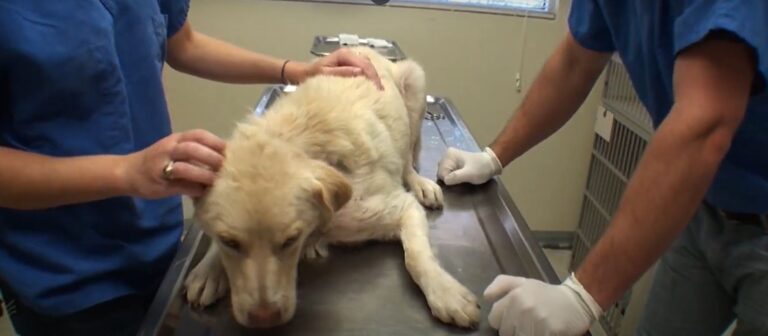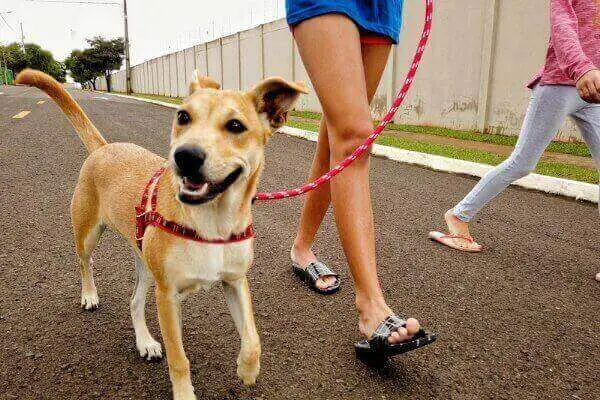Dog Puts Neck/Head On My Mouth (9 Reasons & What To Do)

When dogs lay their neck or head on your mouth, they are likely trying to place their scent on you or grab your attention. This behavior may show that your dog is seeking comfort, attracted to your smell or is just trying to groom. It could also be a sign of dominance or underlying health issues causing Itchiness or pain.
Have you ever found yourself relaxing on the couch, only to have your furry friend come up and lovingly place their neck over your mouth? It’s a behavior that leaves many dog owners puzzled and sometimes amused. This unique gesture of affection, or perhaps something more, raises several questions. Is this a sign of love, a quirky habit, or is there more to this behavior than meets the eye?
At first glance, this might seem like a simple display of affection. Your dog, with their inherent need for closeness and bonding, may choose this unique way to express their love and trust towards you. It’s a behavior seen in many dogs, each with their unique twist on it.
For instance, some dogs might gently lay their neck across your mouth, while others may cover your face entirely with their neck. Regardless of the method, the underlying reasons can be quite intriguing.
But this behavior is more than just a cute quirk. It can be a window into understanding your dog’s emotional and psychological state. Is it a comfort-seeking behavior, a protective gesture, or a sign of possessiveness?
Why Does My Dog Cover My Mouth With Their Neck?
Dogs communicate much differently than humans do. They use body language, vocalizations, and physical contact. When a dog covers your mouth with their neck, they might be trying to communicate something specific. It could be a playful gesture or even their way of telling you to be quiet, akin to a human putting a finger to their lips. Understanding this aspect of canine communication is crucial in deciphering your dog’s intentions.
1. Attention-seeking Behavior
Dogs, like children, enjoy being the center of attention. If your furry friend is placing their neck or head near your mouth, they might be seeking your undivided attention. This is one of their unique ways to signal, “Hey, look at me!” Dogs crave interaction, and such behavior is a clear indication of their need for social engagement. Therefore, make sure you’re giving your pet ample attention each day to foster a stronger bond.
2. Scent Marking
In the canine world, scent plays a critical role in communication. Dogs often mark their territory or belongings by leaving their scent behind. When your dog places their neck or head near your mouth, it might be doing something similar, marking you as “theirs” so that other dogs can stay away from you.
Dogs engage in scent marking because of their instincts to compete with other dogs for territory or resources. You can train your dog to stop this behavior by interruption, positive reinforcement, and distracting them with something positive.
3. For Comfort And Warmth
The dog’s tendency to seek comfort and warmth is an instinctual behavior that can be traced back to their ancestors who cuddled together for warmth and safety. If your dog is placing its head or neck on your mouth, it might be an attempt to derive the warmth radiating from your body. This is especially true in colder climates or for breeds with thin coats. Your breath, which is naturally warm and moist, can be particularly appealing to them. The close contact also offers a sense of comfort and safety, reinforcing the bond between you two.
4. Your Pooch Loves The Smell
Our canine friends explore the world primarily through their sense of smell, which is significantly more powerful than ours. The various odors that come from your mouth, especially following a meal, can be fascinating to your dog. If your dog puts its neck or head on your mouth, it could be attracted to the smell of your breath. This behavior reflects your dog’s curiosity and natural inclination to sniff out interesting scents. It’s a way for them to gather information about their surroundings, even if it sometimes involves your mouth!
5. Fido Wants To Play
Dogs have unique ways of showing they’re ready for a game, and placing their neck or head on your mouth could be one of them. It’s an unconventional way of nudging you into a play session. Whether it’s a game of fetch or a lively romp, this gesture could be their way of saying, “It’s time to have some fun!”
6. Display Of Affection
Your dog’s affection can be expressed in many ways, and one of them is through physical contact. If your dog is placing its head or neck on your mouth, it might be their way of showing love and affection. It’s a unique way of cuddling that signifies a strong bond and trust between you and your dog. This behavior is essentially your dog’s version of a hug or a kiss, demonstrating their attachment and fondness for you.
7. Itchiness Or Irritation
If your dog is repeatedly placing its neck or head on your mouth, it could be experiencing itchiness or irritation. Dogs may use a variety of surfaces to scratch hard-to-reach places. They may have chosen your mouth because it’s at a convenient height or because your facial stubble or teeth provide a scratchy surface that provides relief.
However, consistent scratching or rubbing can indicate skin problems, such as allergies, parasites, or infections. If you notice accompanying signs like redness, swelling, or changes in your dog’s coat, it’s best to consult with a vet.
8. Pack behavior (Dominance)
Dogs are pack animals by nature, and certain behaviors exhibited by your dog might be attributed to their instinctual pack mentality. A dog placing its head or neck on your mouth could be displaying a form of dominance.
In wild canine packs, dominant individuals would often place their heads on the bodies of more submissive pack members to assert their higher status. However, dominance in domestic dogs is a complex and often misunderstood concept, so this behavior should not be interpreted in isolation. It’s crucial to consider the context and other behavioral cues.
9. Grooming
Dogs are self-grooming animals, but they can sometimes use their surroundings to help with the process, particularly for areas they struggle to reach. If your dog is placing its neck or head on your mouth, it could be seeking your help in grooming. For example, they might be trying to dislodge something caught in their fur or soothe an irritated area.
Assisting your dog with grooming not only contributes to its overall health and cleanliness but also strengthens the bond between you. However, if you notice excessive or obsessive grooming behaviors, it might be time to check with a veterinarian, as this could indicate underlying health issues.
What To Do When Your Dog Puts His Head/Neck On Your Mouth
So, what should you do when your dog puts their head/neck on your mouth?
1. Ignore Them So They Don’t Get Rewarded For This Behavior
In dog training, ignoring an unwanted behavior is a standard approach based on the principles of operant conditioning. The premise is that behaviors that receive attention (reward) will be repeated, while behaviors that do not will eventually stop. If your dog is persistently placing its head or neck on your mouth, it could be that they have learned this gets your attention. Therefore, ignoring them when they exhibit this behavior can help break the cycle.
This doesn’t mean you have to shun your furry friend. Rather, when they engage in this behavior, calmly remove their head from your mouth without making a fuss and then carry on with what you were doing. It’s important to remain consistent with this strategy. If you occasionally give in and reward the behavior with attention, it could prolong the process of eliminating it.
2. Provide Sufficient Attention
Dogs are innately social creatures, and they thrive on interaction and companionship. If you find your dog resorting to behaviors like placing its head or neck on your mouth to seek attention, it could be a sign that they are feeling neglected or bored. Consider increasing the amount of quality time you spend with your dog. This could be through more frequent walks, play sessions, training exercises, or simply lounging around together.
Remember, attention doesn’t always mean constant petting or playing. Sometimes, just being in the same room and providing a comforting presence is enough. By ensuring your dog has enough attention and companionship, you can help mitigate attention-seeking behaviors and strengthen your bond.
3. Create Boundaries
Establishing boundaries with your dog is an integral part of creating a balanced and harmonious living environment. Dogs, like people, need to understand what behaviors are acceptable and what aren’t. If your dog continually invades your personal space by placing its head or neck on your mouth, it might be time to implement some training to create boundaries.
Start by teaching your dog a “back” or “off” command. Use positive reinforcement such as treats, praise, or toys to reward your dog when they respond correctly to the command. In time, they’ll understand that respecting your space results in positive outcomes.
4. Provide Enough Mental And Physical Stimulation
An under-stimulated dog can sometimes resort to unusual or unwanted behaviors to alleviate boredom or burn off excess energy. Dogs require a good balance of both physical exercise and mental stimulation to remain happy and healthy. If your dog frequently places its head or neck on your mouth, it could be a call for more engagement.
Physical exercise can take the form of daily walks, runs, or play sessions. Mental stimulation can be provided through puzzle toys, training sessions, or interactive games. Tailor the intensity and duration of these activities to suit your dog’s age, breed, and health status.
Introducing variety into your dog’s routine can also help keep them stimulated. This can involve changing your walking route, introducing new toys, or incorporating new commands or tricks into your training sessions. A well-stimulated dog is not only happier and healthier but also less likely to engage in attention-seeking behaviors.
5. Make Their Bed More Comfortable
Your dog may be seeking comfort and warmth from you if their sleeping quarters are not up to par. If they continually place their head or neck on your mouth, particularly during colder weather, it may be a sign to improve their bedding situation.
Invest in a good quality dog bed that’s appropriate for your dog’s size and breed. Consider factors like orthopedic support for older dogs and heat-retaining properties for short-haired breeds. Place the bed in a quiet, cozy corner where your dog can relax without being disturbed. Add blankets or pillows for extra comfort.
Keep the bed clean and inviting by washing it regularly. Remember, your dog’s sense of smell is far more potent than ours – a clean bed is much more appealing to them. Comfortable sleeping arrangements can help your dog feel more secure and lessen their need to seek physical contact for warmth and comfort.
6. Reward Desired Behavior
Incorporating positive reinforcement in your dog’s training routine is a powerful way to shape their behavior. Rather than focusing on what you don’t want your dog to do, emphasize what you want them to do. If you want to discourage your dog from placing its head or neck on your mouth, identify an alternative behavior that you can reward instead.
For example, if your dog calmly sits or lies down next to you without invading your personal space, respond with a treat, praise, or a pet. By consistently rewarding the desired behavior, you’re reinforcing this as a positive habit. Over time, your dog will learn that this behavior yields rewards and is more likely to repeat it.
7. Seek Medical Attention
Lastly, if you suspect your dog’s behavior may be due to physical discomfort, itchiness, or pain, it’s important to seek veterinary advice promptly. Continuous scratching or rubbing could be indicative of various health issues, such as allergies, skin infections, or parasites.
Your vet can perform a comprehensive physical examination, run diagnostic tests, and recommend the appropriate treatment. They may also provide advice on preventive measures and home care strategies to help manage your dog’s condition.
Remember, as a pet owner, it’s essential to be vigilant about changes in your dog’s behavior and physical condition. Regular veterinary check-ups and prompt attention to potential issues can help ensure your furry friend’s long-term health and well-being.
Final Thoughts
Dogs are complex creatures with a diverse range of behaviors. Some of these, like placing their head or neck on your mouth, may seem odd or even concerning at first glance. However, it’s essential to remember that dogs have different ways of communicating their needs, emotions, and intentions to us. Understanding these behaviors can help us interact with our furry companions more effectively and build a deeper bond with them.
If your dog frequently places their head or neck on your mouth, it’s crucial to decipher what this behavior might mean. It could be a sign of affection, an invitation to play, a display of dominance, or even a cry for comfort and warmth. Pay close attention to the context, including your dog’s overall behavior, body language, and circumstances, to identify the underlying reason.
Regardless of the cause, ensure that you handle the situation appropriately. This can range from ignoring the behavior if it’s unwanted, providing more attention, creating boundaries, enhancing their bed comfort, rewarding desired behavior, or even seeking medical attention if necessary. Patience, understanding, and consistency are key when it comes to modifying your dog’s behavior.
Ultimately, every dog is unique and what works for one might not work for another. If you’re unsure about how to handle the situation or if your dog’s behavior changes suddenly or drastically, don’t hesitate to seek professional advice from a veterinarian or a qualified animal behaviorist. Your understanding and response to your dog’s behavior play a significant role in their well-being and the happiness of your shared environment.
Read related posts about

